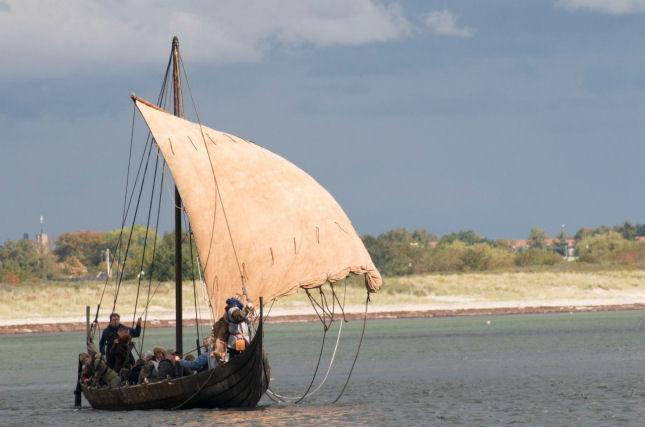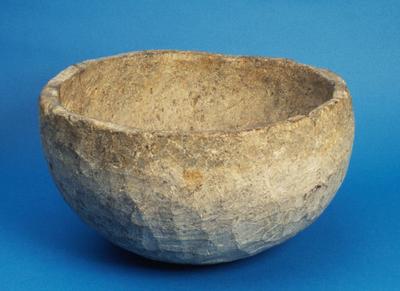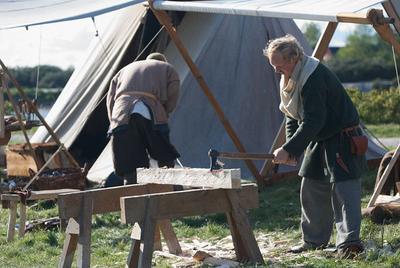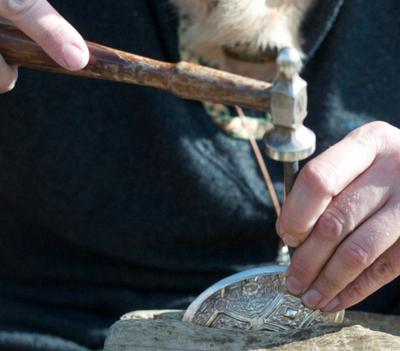Imports in the Viking Age

Enterprising magnates in the Viking Age realised that enormous profits could be made from the trading of foreign products. Therefore Viking tradesfolk travelled long distances to obtain goods. They sailed over the Baltic to Norway and Sweden, down the rivers of Eastern Europe and deep into Russia. The most important Viking exports were slaves and furs. The Viking merchants brought back goods to the Scandinavian trading towns, which they had acquired in exchanges on their travels.
Ottar, a merchant from North Norway, described his trading trips to the south. It took Ottar five days to sail from the trading town of Kaupang on the Oslo Fjord to Hedeby in Schleswig. The merchant Wulfstan could travel from Hedeby to Latvia in seven days.


Trade with the Continent
Hedeby was a magnet for all of the Baltic area’s trade, and the town also functioned as a junction for trade with the whole of Western Europe. This was due to its location on the border between Scandinavia and the territories to the south. Cloth, glass products, ceramics, millstones, salt and wine came to Hedeby from Western Europe. Raw materials like copper, tin and lead for jewellery making were also imported.
Despite all this, Hedeby did not impress the Arabic trader al-Tartushi. He was disappointed to find a town so lacking in goods and wealth, when he visited it in the 900s. However, by Nordic standards Hedeby was a flourishing and busy town.
Scandinavian trading connections
Trading products illustrate the extent and scope of Viking trade contacts. Many objects originate from a completely different location to where they have been found. In Scandinavia there is thought to have been a fast and regular flow of cargo ships between the trading towns of Hedeby in Denmark, Birka in Sweden and Kaupang in Norway.
Birka, like Hedeby, was one of the large and busy trading towns. It was founded in the 700s, presumably by royal decree, and was a very well organised trading centre. All year round merchants travelled to Birka to exchange fur and rope for Arabic silver, luxury products and provisions. One of the Swedes’ most important sources of revenue was iron ore. This was mainly sold to Danish traders and shipped to Hedeby. Via Birka and Gotland, Hedeby was also connected with the trading routes along the Russian rivers to Constantinople and the Caliphate in Baghdad, where luxury products could be obtained.
Merchants also travelled each summer to the market at Kaupang, located on the Oslo Fjord. Kaupang enjoyed a lucrative export trade in walrus teeth, bird feathers, skins, whetstones of schist and cooking pots of soapstone, which were also sold to the Danes to the south. However, the market centre of Kaupang faced strong competition from trading towns in the British Isles, where most Norwegian traders preferred to sell their goods. The old Viking settlement at Dublin in particular attracted merchants.

Local production
Archaeological finds from the trading towns of the Viking period indicate what types of products local craftsmen sold. Waste from craftsmen’s workshops in particular has revealed what was produced. Finds of spindle whorls and loom weights show that yarn was spun and cloth woven. Many leather items were also made, including sheaths, purses, belts, shoes, straps and harnesses.
Amongst the many craftsmen, were comb makers, who made combs from bone and antler, and bead makers, who produced colourful beads of glass and amber. Smiths also lived in the towns. They produced and repaired kitchen utensils, weapons, tools and keys. Fragments of moulds show that jewellery was also made in the towns. Woodwork probably occupied the greatest numbers craftsmen. Houses and ships needed to be built, and furniture and kitchen utensils made.
These numerous different products show that there must have been a large local, as well as international, range of goods available in the trading towns.
